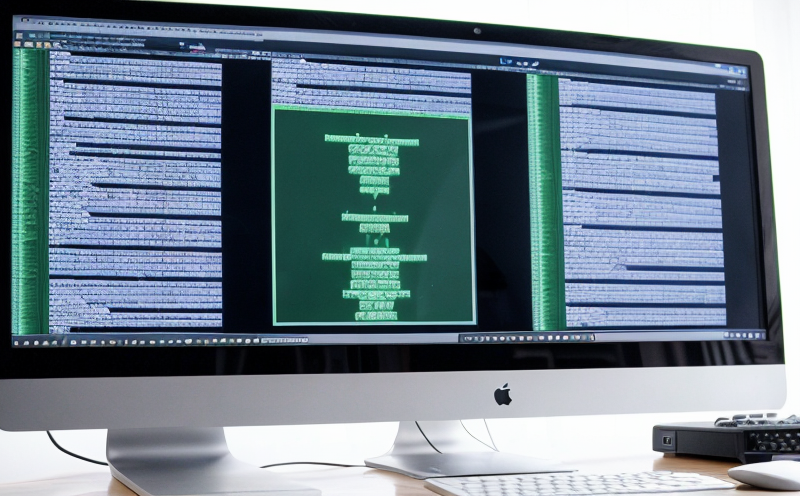Interactive Application Security Testing IAST in Software Systems
In today’s digital landscape, ensuring the security of software systems is paramount. Interactive Application Security Testing (IAST), a crucial component of cybersecurity and technology testing, helps identify vulnerabilities within application code while it runs. This service focuses on static and dynamic analysis to enhance the security posture of web applications by detecting potential threats such as SQL injection, cross-site scripting (XSS), and buffer overflows.
The process involves inserting sensors into the software’s source code or compiled binaries during development and runtime. These sensors monitor application behavior in real-time, collecting data on execution paths and identifying suspicious activities that could indicate security flaws. The collected data is then analyzed to produce reports highlighting areas needing improvement.
IAST complements other testing methodologies like SAST (Static Application Security Testing) and DAST (Dynamic Application Security Testing), offering a more comprehensive approach to securing applications early in the development lifecycle. By integrating IAST into your software development process, you can catch security issues before they become exploitable vulnerabilities.
The service typically includes:
- Integration of IAST tools into existing CI/CD pipelines
- Real-time monitoring and logging of suspicious activities
- Vulnerability identification through static and dynamic analysis
- Automated reporting with actionable insights
The benefits extend beyond mere detection; IAST helps in:
- Enhancing security posture: By identifying vulnerabilities early, the risk of exploitation is significantly reduced.
- Risk mitigation: Prioritizing fixes based on threat severity ensures that critical issues are addressed first.
- Compliance: Ensuring adherence to industry standards and regulations like OWASP Top Ten.
- Cost-effectiveness: Early detection of security issues translates to lower remediation costs compared to post-deployment fixes.
The following table summarizes the key advantages:
| Advantage | Description |
|---|---|
| Vulnerability Detection | Identifies potential security risks within the application code. |
| Real-Time Monitoring | Monitors and logs suspicious activities in real-time to catch threats early. |
| Automated Reporting | Automatically generates detailed reports for easy identification of vulnerabilities. |
| Integration with CI/CD Pipelines | Ensures that security testing is an integral part of the development process. |
The next table highlights some typical use cases and application examples:
| Use Case | Description |
|---|---|
| Web Application Security | IAST can be used to protect web applications from common vulnerabilities such as SQL injection and XSS. |
| Mobile App Security | Although primarily designed for web apps, IAST can also be adapted for mobile application security testing. |
| API Security Testing | IAST can help secure APIs by detecting and mitigating vulnerabilities before they are exposed to external users. |
Frequently Asked Questions:
Benefits
- Vulnerability Detection: Identifies potential security risks within the application code early in the development process.
- Real-Time Monitoring: Monitors and logs suspicious activities in real-time to catch threats early.
- Automated Reporting: Automatically generates detailed reports for easy identification of vulnerabilities.
- Integration with CI/CD Pipelines: Ensures that security testing is an integral part of the development process.
Why Choose This Test
Choosing Interactive Application Security Testing (IAST) for your software systems offers several advantages. Firstly, it provides a proactive approach to security by identifying vulnerabilities early in the development lifecycle. This not only reduces the risk of exploitation but also minimizes the cost and effort required for remediation.
Secondly, IAST integrates seamlessly with existing CI/CD pipelines, ensuring that security testing is an integral part of the development process. This helps in catching vulnerabilities before they become exploitable threats.
Additionally, by prioritizing fixes based on threat severity, organizations can ensure that critical issues are addressed first. This not only enhances security but also improves overall application quality and reliability.
Furthermore, IAST supports compliance with industry standards like OWASP Top Ten and NIST Cybersecurity Framework. By adhering to these standards, organizations demonstrate their commitment to cybersecurity best practices and regulatory requirements.
Use Cases and Application Examples
| Use Case | Description |
|---|---|
| Web Application Security | IAST can be used to protect web applications from common vulnerabilities such as SQL injection and XSS. |
| Mobile App Security | Although primarily designed for web apps, IAST can also be adapted for mobile application security testing. |
| API Security Testing | IAST can help secure APIs by detecting and mitigating vulnerabilities before they are exposed to external users. |
| Application Example | Description |
|---|---|
| E-commerce Platform | IAST can be used to secure e-commerce platforms by identifying and mitigating vulnerabilities in payment processing systems. |
| Social Media Application | IAST can help secure social media applications by detecting and addressing vulnerabilities that could lead to data breaches. |





